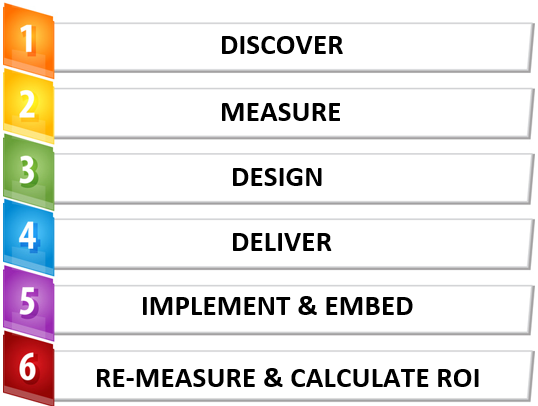
Ineffective leadership is the biggest reversible cost to a business.
If the leadership is dysfunctional at the top, then it gravitates downwards, infecting leaders at other levels.
However, dysfunction in leadership at any level will have a negative impact at all levels of the business.
The costs come from loss of: -
- talent
- engagement
- productivity
- efficiency
- innovation
- customers
and are the result of deteriorated culture, caused by ineffective leadership.
Below are two cases that illustrate what can happen.
Charles’ Story

Charles (not his real name) was an excellent technician and pretty good marketer too. He had that knack of being technical yet able to convey the complex simply for people who weren’t technical.
Charles progressed rapidly and became the company’s CEO.
Within six months of his appointment, some very good talent left, the culture had soured and the business was much less productive.
When we were asked to help remedy the situation, our discovery sessions revealed that Charles was micro-managing and his moods were inconsistent, ranging from joviality (when people were doing things exactly as he wanted them to) to being angry and surly (when people advised that there was a better way than his).
We worked with Charles for six months, once we established that he wasn’t on the sociopath spectrum, but needed leadership development and was fearful of failure and making errors.
We acknowledge Charles taking to his development with commitment and passion.
On completion of our assignment Charles was regarded as a respected and trusted leader. Good people stayed and the firm was even successful in bringing back some of the talent who’d left earlier, particularly those who’d gone from the “frying pan into the fire”.
Return on Investment (ROI)
The tangible ROI was just over 400%. The intangible ROI was estimated as a multiple of the tangible.
Carol’s Story
Carol (not her real name) was appointed head of HR for her firm. Carol had experience in HR systems development and industrial relations policy. Carol is also an intense yet caring person. It was also her first leadership role.
Soon after her appointment the department rapidly gained the reputation of not helping management deal effectively with unacceptable behaviour and performance.
The common complaint was that HR would simply tell the manager or supervisor to go and have another ‘talk’ with the person, and to keep a record of the conversation.
Middle management began leaving, whilst a group of employees became known as deliberately disengaged.
Productivity went down noticeably and costs rose.
We were asked to intervene.
Our discovery revealed that: -
- supervisors had received no training in team development, conflict resolution and techniques for engagement and high performance.
- HR had been promising to implement a clear performance management process, that hadn’t progressed past Carol commencing to draft the policy.
- Carol was very risk and conflict averse; fearful of making error and concerned about failing in her first leadership role.
We helped the supervisors develop their leadership skills and coached Carol to overcome her issues.
The performance management process being developed was scrapped for a streamlined supervisor-led performance mastery mindset and routine.
The culture improved noticeably, driving up performance and productivity.
HR earned a better reputation as valuable internal consultants regarding relevant legislation, whilst the supervisors had the skills to deal rapidly and effectively with behaviour and performance issues without escalation to HR.
Again, we acknowledge the commitment that the supervisors and Carol gave to their improvement.
ROI
In this case the tangible ROI exceeded 600%. We did not measure the intangible ROI, though we heard that internal opinion put it at over 2000%.
What We Did
Our approach in both cases, indeed most cases, is a combination of science and skill.

- Once commissioned, we made no assumptions.
- Instead we observed, asked and listened deeply.
- We conducted a thorough investigation of evidence and root causes.
- This included understanding the desired core values as well as the values being lived; the vision and the extent to which it is understood by all.
- We identified people and processes deserving attention.
- Regarding the people, we always prefer to retain and remedy, rather than remove and replace. The cost of replacement can be exorbitant.
- The exception is if the person is high on the sociopath spectrum, with evidence present of the damage they are causing. We are qualified to do this.

- We profiled the relevant people for behavioural traits, driving forces, emotional intelligence, talent DNA and acumen capacity.
- We gained specific trustworthy feedback from upline, peers and direct reports.
- We measured the processes connected to the root causes for current efficiency, effectiveness and future capability, using our proprietary tools and subject matter experts, both internally and if needed, externally.
- We measured the culture as it is at this point, using our proprietary tool.
- A key consideration is to assess the change maturity capability of the business.

- Using the rich and useful data we collected (described above) we collaborated and co-created with the relevant people to design targeted development and coaching.
- We collaborated and co-created with relevant people to review and improve targeted processes.
- A key process most often overlooked is that of effective selection, induction and onboarding.
- We designed from the perspective of influencing the culture to lift, honour the desired core values, and alignment with the vision.
- A key consideration is the need to include change leadership capability.

- We delivered the interventions with a combination of consulting, training and coaching whilst maintaining the flow of business.
- Elements of the content can be provided online for future inductions.
- The delivery step finished where specific workplace improvement projects were identified and the insights and skills delivered could now be exercised and embedded via those projects.

- We facilitated and coached the people to succeed in each project, ensuring embedding of the chosen improvements, as well as other valuable realisations that emerged spontaneously from the process.

- Using the same measuring tools we deployed initially, we remeasured the people, the processes and the culture.
- We used standard ROI calculations to derive the results.
- We ensure no less than six months between initial and final measurements.
Conclusion
Through these experiences and others like them, we learned two valuable lessons.
Firstly, the focus must be on the people first, for they design and operate processes.
Their functionality and dysfunctionality seeps into design and process.
Secondly, during our completion interviews with each client, we ask this question: -
“If you had to do this again, what would you do differently?”
Their answer is invariably this: -
“We’d start earlier!”
When will you start?
We can help you.
